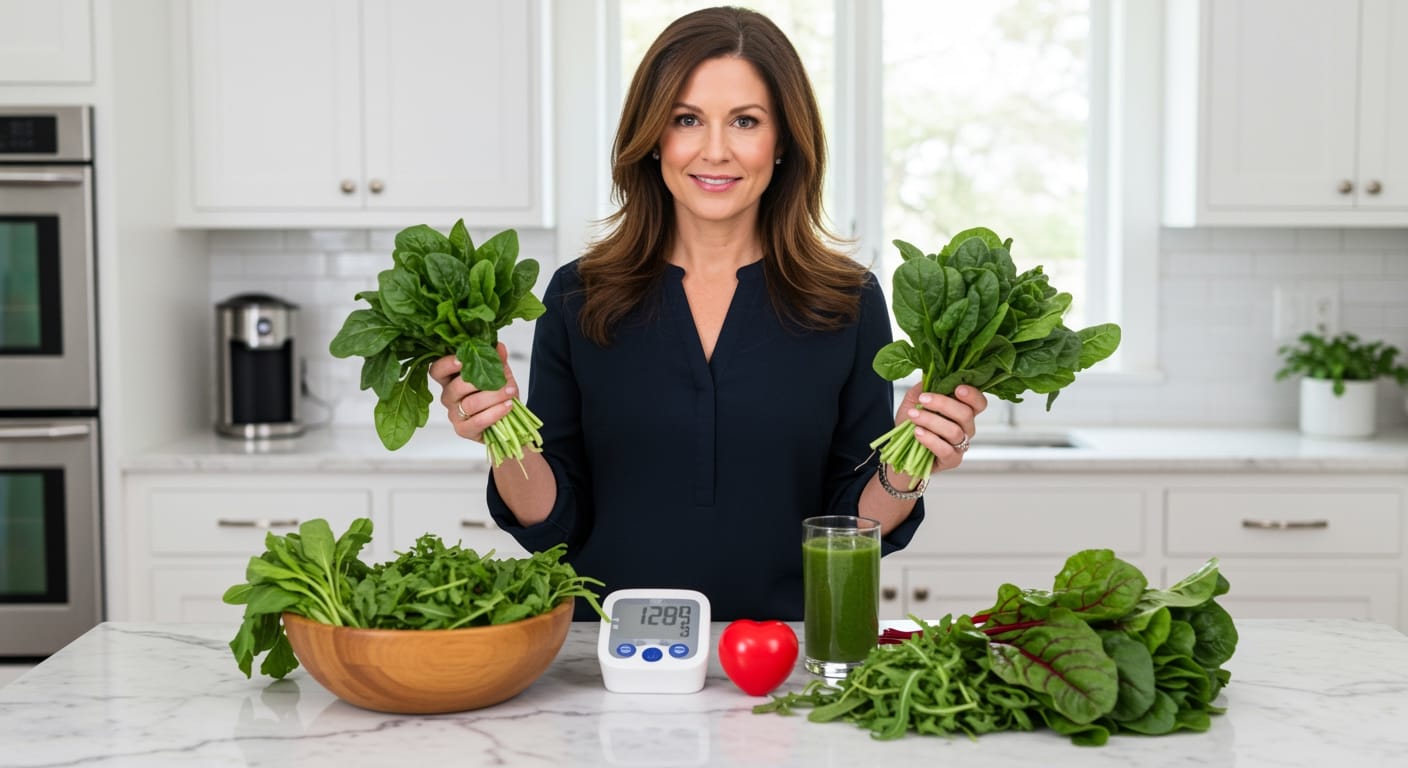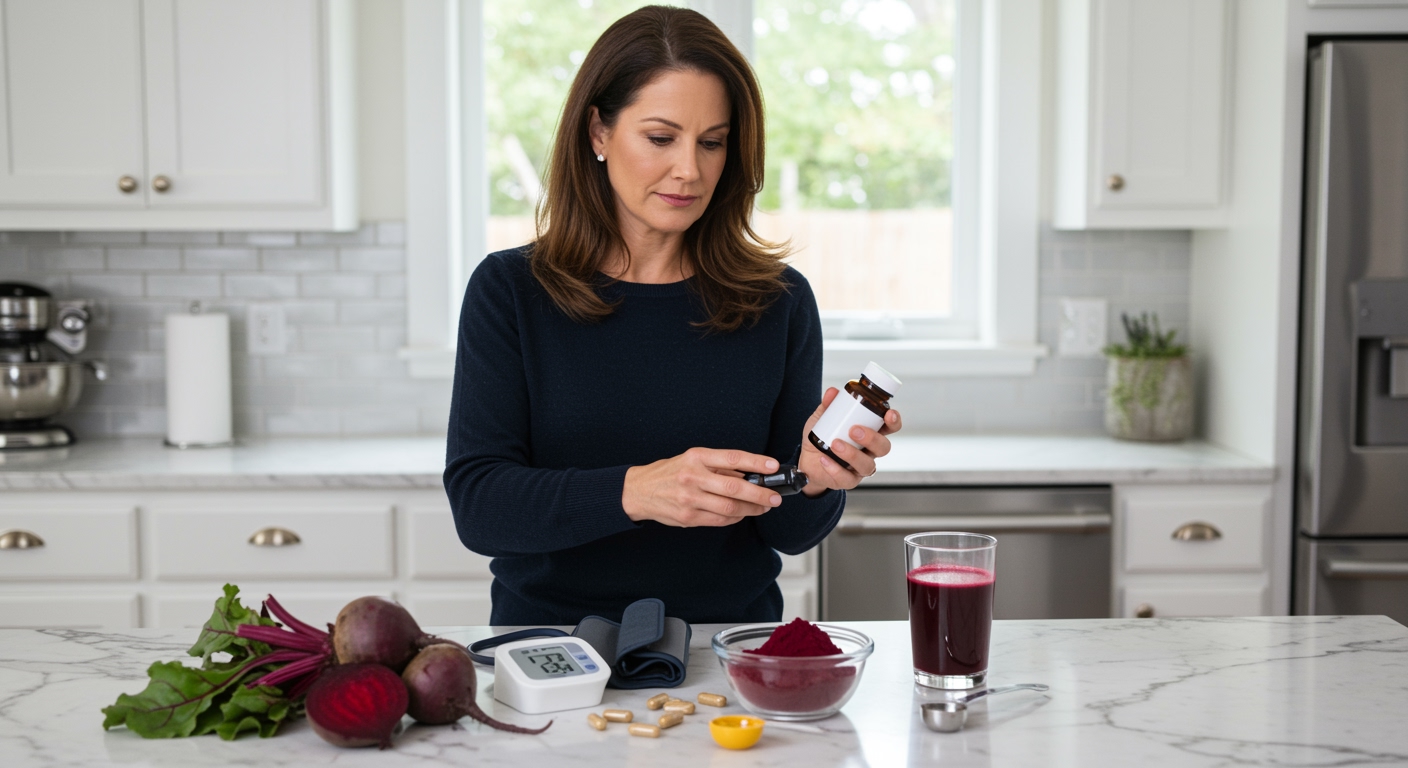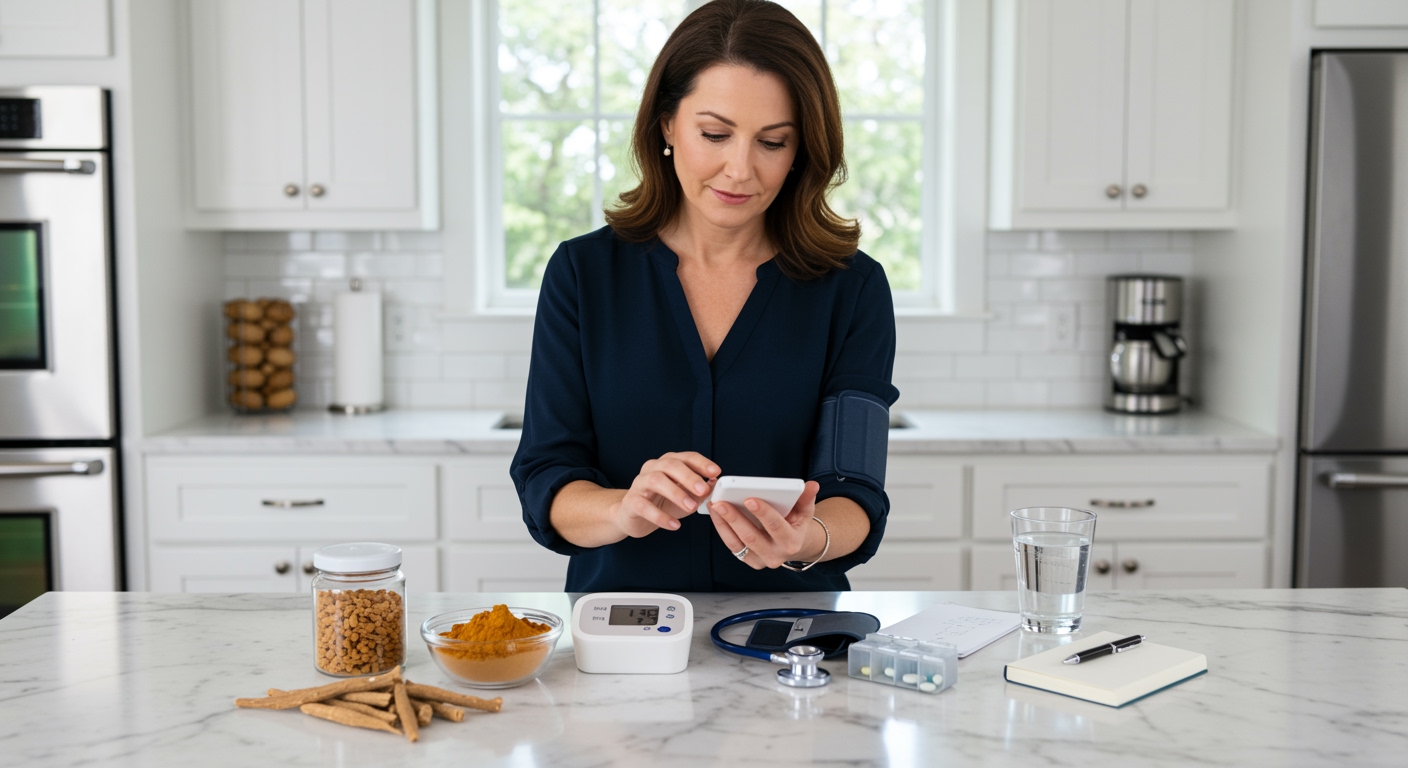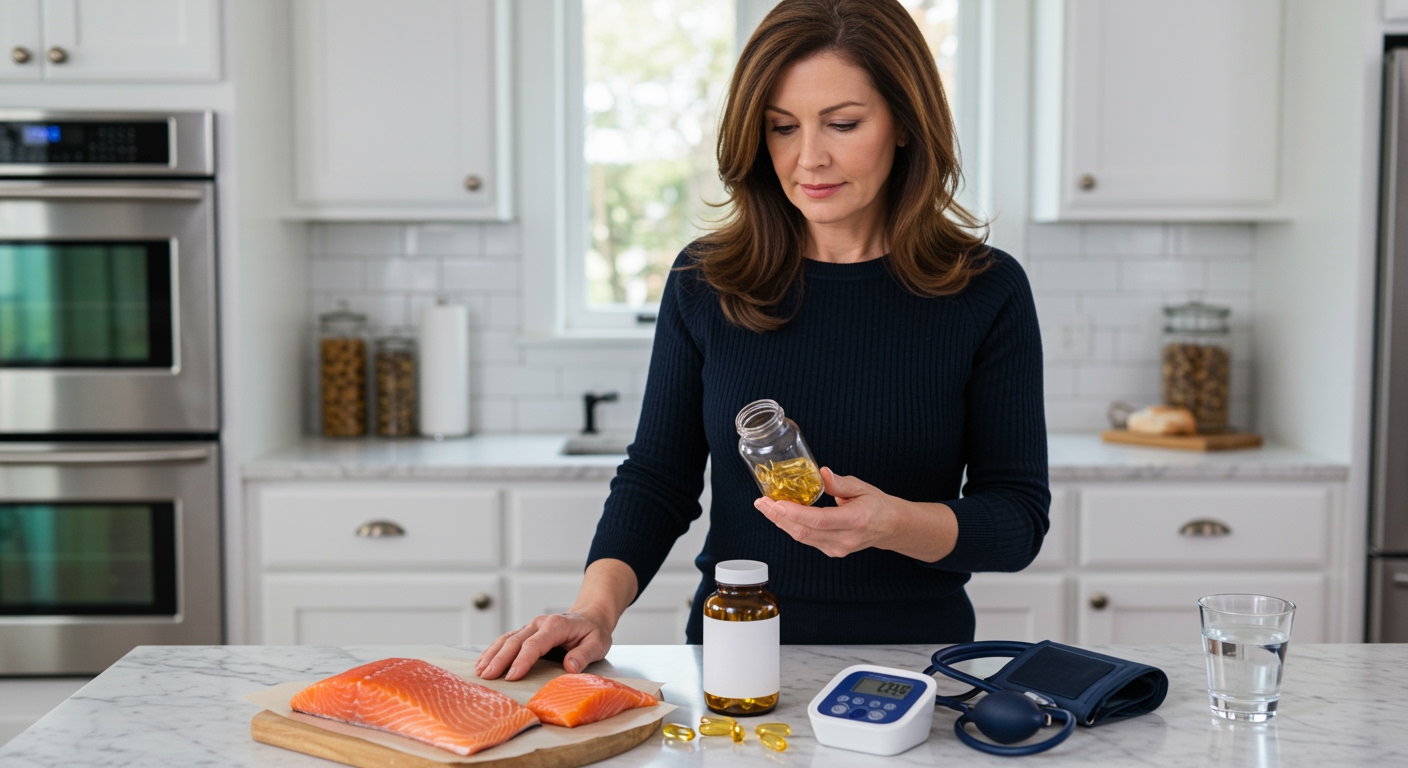✪ Key Takeaway: One cup of leafy greens daily can reduce blood pressure by 2-5 mmHg through nitrates and potassium content.
Introduction
Your doctor tells you to eat more vegetables, but you wonder if leafy greens really make that much difference for your blood pressure.
You might be asking this question because you have heard conflicting information about which foods actually help with hypertension, or perhaps you are tired of bland salads that do not seem to change your numbers.
Hi, I am Abdur, your nutrition coach, and today I am going to explain exactly how leafy greens affect your blood pressure, which ones work best, and how much you really need to see results.
What Makes Leafy Greens Special for Blood Pressure?
Leafy greens contain two powerful compounds that directly impact your blood pressure: nitrates and potassium.
When you eat leafy greens, your body converts nitrates into nitric oxide, which relaxes and widens your blood vessels.
This process happens within hours of eating nitrate-rich vegetables, creating an immediate effect on your cardiovascular system.
The potassium in leafy greens works differently by helping your kidneys remove excess sodium from your body.
Research shows that people who consume one cup of leafy greens daily have blood pressure readings that are 2-5 mmHg lower than those who eat less.
This reduction might seem small, but it translates to a significant decrease in heart disease and stroke risk over time.
✪ Fun Fact: Your blood vessels start relaxing within 30 minutes of eating nitrate-rich leafy greens.
Which Leafy Greens Work Best for Hypertension?
Not all leafy greens are created equal when it comes to blood pressure benefits.
Spinach tops the list with the highest nitrate content, containing about 250 mg of nitrates per 100 grams.
Arugula comes in second place, followed by lettuce varieties like butter lettuce and romaine.
Kale and Swiss chard provide excellent potassium content but contain moderate levels of nitrates.
The key is variety because different greens provide different benefits for your cardiovascular system.
Fresh greens contain more active compounds than frozen or canned versions, though frozen spinach still provides significant benefits.
Cooking methods matter too, as boiling reduces nitrate content while steaming and raw consumption preserve these beneficial compounds.
✪ Pro Tip: Eat your leafy greens raw or lightly steamed to maximize their blood pressure benefits.
How Much Do You Really Need to See Results?
The magic number for blood pressure benefits is one cup of leafy greens per day.
This amount provides approximately 200-300 mg of nitrates, which is the threshold needed for cardiovascular benefits.
You can achieve this goal through a large salad, a green smoothie, or by adding greens to your meals throughout the day.
Studies show that people who eat this amount consistently for four weeks see measurable improvements in their blood pressure readings.
The timing of consumption does not matter as much as consistency, though some people prefer eating greens earlier in the day for better digestion.
More is not always better, as your body can only process a certain amount of nitrates at one time.
The sustained effect comes from making leafy greens a regular part of your daily eating pattern rather than consuming large amounts sporadically.
✪ Note: Consistency matters more than quantity when it comes to blood pressure benefits from leafy greens.
Can Leafy Greens Replace Blood Pressure Medication?
Leafy greens are powerful, but they work best as part of a comprehensive approach to managing hypertension.
While one cup daily can reduce blood pressure by 2-5 mmHg, this reduction is significant but modest compared to prescription medications.
People with mild hypertension may see enough improvement from dietary changes alone, but those with moderate to severe high blood pressure typically need medication alongside lifestyle modifications.
The real power of leafy greens lies in their ability to enhance the effectiveness of other blood pressure management strategies.
When combined with reduced sodium intake, regular exercise, and stress management, leafy greens can contribute to substantial blood pressure improvements.
Never stop taking prescribed blood pressure medication without consulting your doctor, even if your numbers improve with dietary changes.
The goal is to work with your healthcare provider to potentially reduce medication needs over time as your lifestyle improvements take effect.
✪ Pro Tip: Track your blood pressure readings when adding leafy greens to show your doctor the improvements.
The Bottom Line
Leafy greens are genuinely important for managing hypertension, with one cup daily providing measurable blood pressure benefits through nitrates and potassium.
As I always tell my clients: Small, consistent changes create big health transformations over time.
I would love to hear about your experience with leafy greens and blood pressure management, so please share your questions, success stories, or challenges in the comments below.
References
At NutritionCrown, we use quality and credible sources to ensure our content is accurate and trustworthy. Below are the sources referenced in creating this article:





